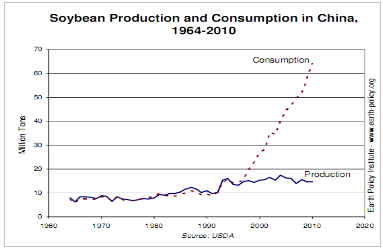It’s one of the world’s oldest beverages. Brewed by the average man to stave off waterborne disease in the Dark Ages and peddled by European monasteries, today beer is a $104 Billion dollar industry comprised of many thousands of breweries, ranging from commercial to backyard.
We know beer is a smooth and refreshing drink that is capable of turning your average soccer mom into Elle Macpherson in enough quantity, but can it offer other benefits?
As we quickly move into an age of closed-loop systems where economical uses are found for industrial by-products which would otherwise end up in landfills or incinerators, a question we are currently wrangling with is what can be done with the by-products of the brewing process, specifically spent grains?
Historically used as animal feed, increased beer production has led to increasing sums of grain simply being discarded. This is a huge waste in our opinion, and creates a unique opportunity.
The 20th Century mindset of sending “trash” to landfills is changing rapidly as resource constraints rise and we simply run out of room for the stuff. We expect spent grains, which trade for roughly 20% of spot barley futures on the Chicago Mercantile Exchange, to be re-valued as they are used for more than mere hog feed.
The situation is reminiscent of the used cooking oil industry in the United States during the mid-2000’s, when restaurateurs used to pay for their oil to be hauled away. Then diesel prices rose to the point where refined biodiesel became economically viable. This altered the dynamics of the industry and soon those hauling away oil had to pay for the right to a consistent supply.
We expect the same to occur in the market for spent grains globally as the value of this commodity rises markedly, specifically in the developing world where resource constraints are already more exacerbated than those in the developed world, and as soy, wheat and corn become increasingly expensive.
With spent grains being shown little commercial attention beyond wet feed, we are actively exploring value-added methods which can deliver multiples on our investment. Some of the following applications are worth considering.
- Aquaculture is fast becoming an important part of the global seafood industry in a period when fish stocks continue to come under pressure from increasing demand. Having initially gained traction in Southern Africa, today aquaculture represents approximately 47% of fish sold commercially.Ironically, while aquaculture is branded as environmentally friendly, fish farmers largely feed their stock fishmeal, composed of wild caught anchovies. As demand for fishmeal has grown in line with aquaculture, anchovy stocks, a main ingredient, have become depleted causing prices to rise and thus incentivizing fisherman to further over-fish.

Unsustainable, spent grains can help buffer this meteoric rise in demand by being a substitute in fish feed of up to 15%. With a protein content of between 30% and 40%, according to FAO, spent grains are an inexpensive and “green” way in which to feed this growing industry (pun intended) and increase one’s profit margin. - Bug and worm farming is not often an industry associated with glamour, though that is precisely what allows it to remain so attractive and profitable—no one wants to farm bugs. Ironically, the profit margins are quite remarkable. In China farmed cockroaches are reportedly fetching up to $20 per pound.Consumed on a daily basis in over 100 countries and in high demand, bugs are a valuable source of protein for many who cannot afford a fillet mignon. However, in the developing world where demand for bugs is increasing there are few bug farms, as most of the supply is wild caught.I saw an opportunity with tarantulas in Cambodia (They are quite tasty – Yes, I have eaten them many times) to crickets and grasshoppers (The latter is gaining a following in the US) it is only a matter of time until large scale commercial farms become omnipresent.The chart below shows China’s soy imports, which have grown exponentially over the past decade largely due to increased protein consumption. Perhaps we will see the same voracious demand for bugs over the coming years as their true potential is realized in the mainstream.
In fact, the UN recently released a A 200-page report which pointed out that 2 billion people worldwide already supplement their diets with bugs. The agency said insects are “extremely efficient” in converting feed into edible meat. How efficient? They can, on average convert 2 kilos of feed into 1 kilo of bug mass. Cattle require 4 times more!
- Charcoal is a main cooking fuel in many developing countries, though it is often produced from cutting down forests, which leads to unsustainable agricultural practices. As fuel demand continues to rise, following discretionary income, alternative sources of charcoal will need to be introduced.One such alternative is spent grains charcoal. Once relieved of their moisture and pressed into briquettes and charred, spent grain charcoal can yield over 6,000Kcals; this is on par with some of the best coal in the world. With an ash content below 6%, spent grain charcoal could solve many problems in the developing world where breweries not only provide beverages, but the foundation for cooking, thus becoming positive, integral parts of local communities.
We live in a world of finite resources where commodity prices remain elevated, it is proving increasingly profitable to identify inefficient operating environments where by-products are viewed with little value, and finding applications for them. Spent grains being but one by-product of one industry which can be acquired at a significant discount to items of equal value, it can pay to be “green”.
In the future I will be discussing other industries we are assessing where the potential to create value-add products from by-products can not only lead to new industries and a cleaner world, but significant ROI.
– Scott
“What is the use of a house if you don’t have a decent planet to put it on?” – Henry David Thoreau


